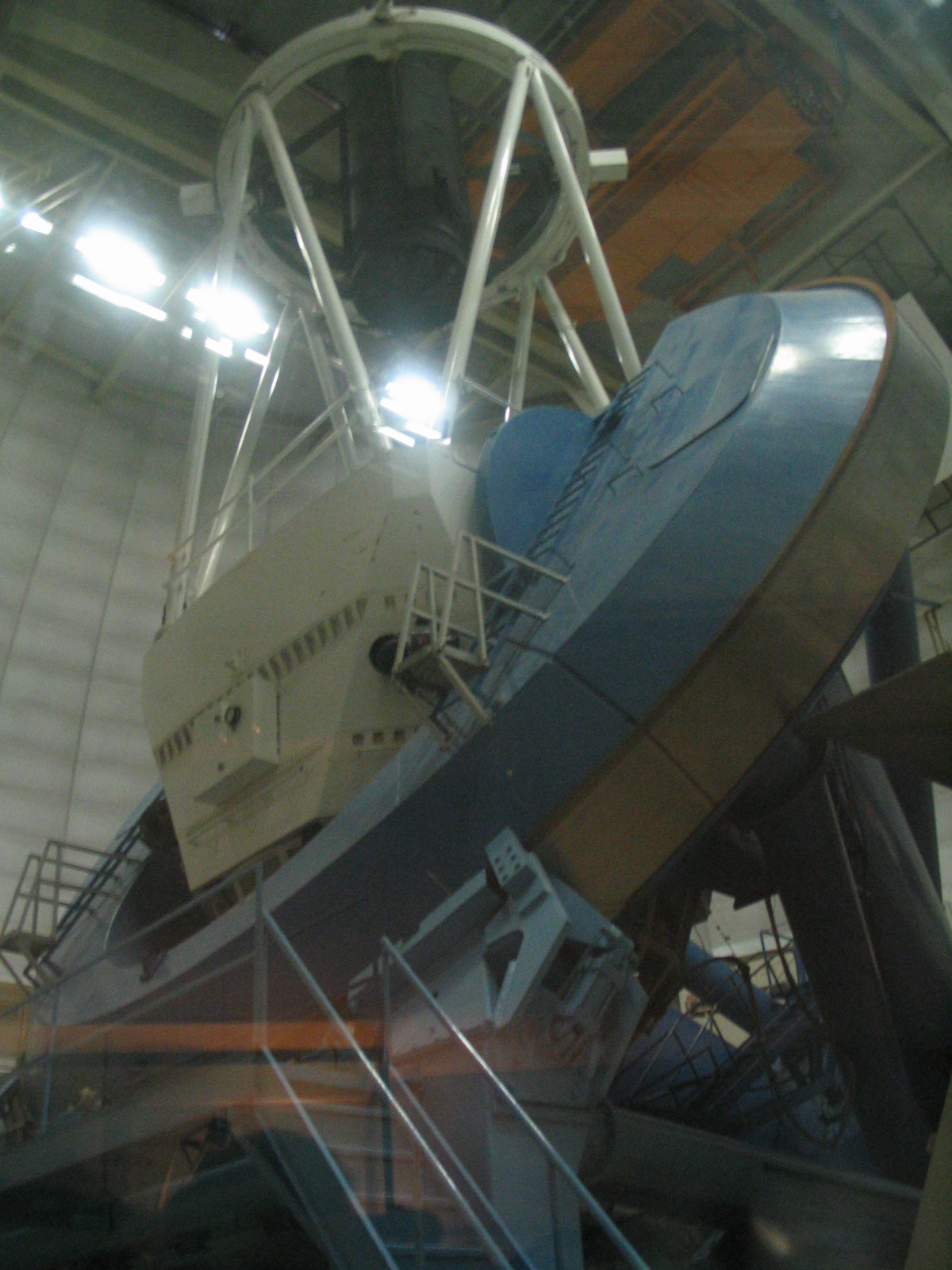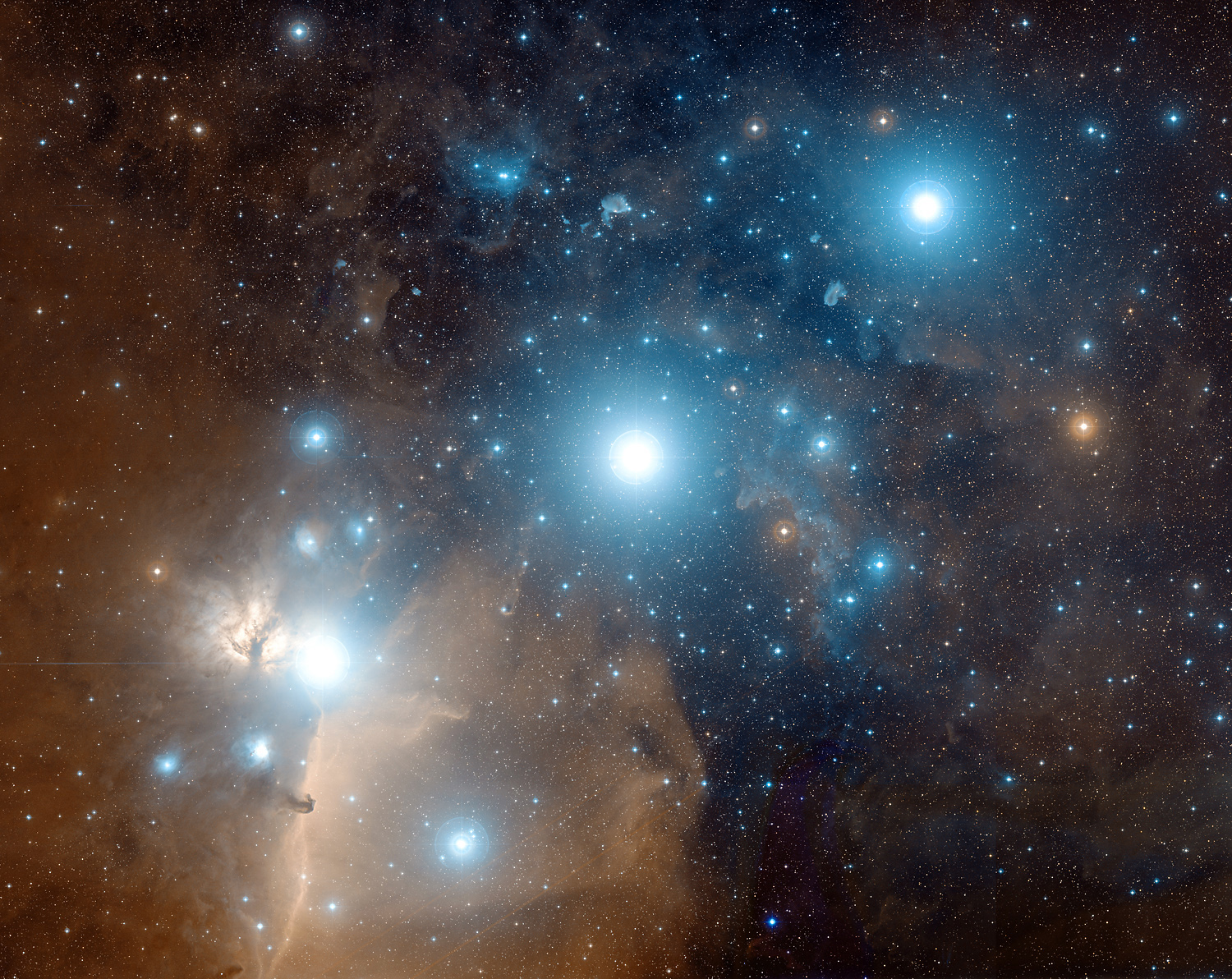|
Reverberation Mapping
Reverberation mapping (or Echo mapping) is an astrophysical technique for measuring the structure of the broad-line region (BLR) around a supermassive black hole at the center of an active galaxy, and thus estimating the hole's mass. It is considered a "primary" mass estimation technique, i.e., the mass is measured directly from the motion that its gravitational force induces in the nearby gas. Newton's law of gravity defines a direct relation between the mass of a central object and the speed of a smaller object in orbit around the central mass. Thus, for matter orbiting a black hole, the black-hole mass M_\bullet is related by the formula : GM_\bullet = f \, R_\text \, (\Delta V)^2 to the RMS velocity Δ''V'' of gas moving near the black hole in the broad emission-line region, measured from the Doppler broadening of the gaseous emission lines. In this formula, ''R''BLR is the radius of the broad-line region; ''G'' is the constant of gravitation; and ''f'' is a poo ... [...More Info...] [...Related Items...] OR: [Wikipedia] [Google] [Baidu] |
Accretion Disk
An accretion disk is a structure (often a circumstellar disk) formed by diffuse material in orbital motion around a massive central body. The central body is most frequently a star. Friction, uneven irradiance, magnetohydrodynamic effects, and other forces induce instabilities causing orbiting material in the disk to spiral inward toward the central body. Gravitational and frictional forces compress and raise the temperature of the material, causing the emission of electromagnetic radiation. The frequency range of that radiation depends on the central object's mass. Accretion disks of young stars and protostars radiate in the infrared; those around neutron stars and black holes in the X-ray part of the spectrum. The study of oscillation modes in accretion disks is referred to as diskoseismology. Manifestations Accretion disks are a ubiquitous phenomenon in astrophysics; active galactic nuclei, protoplanetary disks, and gamma ray bursts all involve accretion disks. These di ... [...More Info...] [...Related Items...] OR: [Wikipedia] [Google] [Baidu] |
Observational Astronomy
Observational astronomy is a division of astronomy that is concerned with recording data about the observable universe, in contrast with theoretical astronomy, which is mainly concerned with calculating the measurable implications of physical models. It is the practice and study of observing celestial objects with the use of telescopes and other astronomical instruments. As a science, the study of astronomy is somewhat hindered in that direct experiments with the properties of the distant universe are not possible. However, this is partly compensated by the fact that astronomers have a vast number of visible examples of stellar phenomena that can be examined. This allows for observational data to be plotted on graphs, and general trends recorded. Nearby examples of specific phenomena, such as variable stars, can then be used to infer the behavior of more distant representatives. Those distant yardsticks can then be employed to measure other phenomena in that neighborhood, inc ... [...More Info...] [...Related Items...] OR: [Wikipedia] [Google] [Baidu] |
Concepts In Astrophysics
A concept is an abstract idea that serves as a foundation for more concrete principles, thoughts, and beliefs. Concepts play an important role in all aspects of cognition. As such, concepts are studied within such disciplines as linguistics, psychology, and philosophy, and these disciplines are interested in the logical and psychological structure of concepts, and how they are put together to form thoughts and sentences. The study of concepts has served as an important flagship of an emerging interdisciplinary approach, cognitive science. In contemporary philosophy, three understandings of a concept prevail: * mental representations, such that a concept is an entity that exists in the mind (a mental object) * abilities peculiar to cognitive agents (mental states) * Fregean senses, abstract objects rather than a mental object or a mental state Concepts are classified into a hierarchy, higher levels of which are termed "superordinate" and lower levels termed "subordinate". Additi ... [...More Info...] [...Related Items...] OR: [Wikipedia] [Google] [Baidu] |
Astronomical Imaging
Astrophotography, also known as astronomical imaging, is the photography or imaging of astronomical objects, celestial events, or areas of the night sky. The first photograph of an astronomical object (the Moon) was taken in 1839, but it was not until the late 19th century that advances in technology allowed for detailed stellar photography. Besides being able to record the details of extended objects such as the Moon, Sun, and planets, modern astrophotography has the ability to image objects outside of the visible spectrum of the human eye such as dim stars, nebulae, and galaxies. This is accomplished through long time exposure as both film and digital cameras can accumulate and sum photons over long periods of time or using specialized optical filters which limit the photons to a certain wavelength. Photography using extended exposure-times revolutionized the field of professional astronomical research, recording hundreds of thousands of new stars, and nebulae invisible to th ... [...More Info...] [...Related Items...] OR: [Wikipedia] [Google] [Baidu] |
Active Galaxies
An active galactic nucleus (AGN) is a compact region at the center of a galaxy that emits a significant amount of energy across the electromagnetic spectrum, with characteristics indicating that this luminosity is not produced by the stars. Such excess, non-stellar emissions have been observed in the radio, microwave, infrared, optical, ultra-violet, X-ray and gamma ray wavebands. A galaxy hosting an AGN is called an active galaxy. The non-stellar radiation from an AGN is theorized to result from the accretion of matter by a supermassive black hole at the center of its host galaxy. Active galactic nuclei are the most luminous persistent sources of electromagnetic radiation in the universe and, as such, can be used as a means of discovering distant objects; their evolution as a function of cosmic time also puts constraints on models of the cosmos. The observed characteristics of an AGN depend on several properties such as the mass of the central black hole, the rate of gas accret ... [...More Info...] [...Related Items...] OR: [Wikipedia] [Google] [Baidu] |
M–sigma Relation
The M–sigma (or ''M''–''σ'') relation is an empirical correlation between the stellar velocity dispersion ''σ'' of a galaxy bulge and the mass M of the supermassive black hole at its center. The ''M''–''σ'' relation was first presented in 1999 during a conference at the Institut d'Astrophysique de Paris in France. The proposed form by David Merritt of the relation, which was called the "Faber–Jackson law for black holes", was : \frac \approx 3.1\left(\frac\right)^4. where M_\odot is the solar mass. Publication of the relation in a refereed journal, by two groups, took place the following year. One of many recent studies, based on the growing sample of published black hole masses in nearby galaxies, givesMcConnell, N. J. et al. (2011) Two ten-billion-solar-mass black holes at the centres of giant elliptical galaxies ''Nature'', 480, 215–218 : \frac \approx 1.9\left(\frac\right)^. Earlier work demonstrated a relationship between galaxy luminosity and black hol ... [...More Info...] [...Related Items...] OR: [Wikipedia] [Google] [Baidu] |
Deconvolution
In mathematics, deconvolution is the inverse of convolution. Both operations are used in signal processing and image processing. For example, it may be possible to recover the original signal after a filter (convolution) by using a deconvolution method with a certain degree of accuracy. Due to the measurement error of the recorded signal or image, it can be demonstrated that the worse the signal-to-noise ratio (SNR), the worse the reversing of a filter will be; hence, inverting a filter is not always a good solution as the error amplifies. Deconvolution offers a solution to this problem. The foundations for deconvolution and time-series analysis were largely laid by Norbert Wiener of the Massachusetts Institute of Technology in his book ''Extrapolation, Interpolation, and Smoothing of Stationary Time Series'' (1949). The book was based on work Wiener had done during World War II but that had been classified at the time. Some of the early attempts to apply these theories were in ... [...More Info...] [...Related Items...] OR: [Wikipedia] [Google] [Baidu] |
Correlation
In statistics, correlation or dependence is any statistical relationship, whether causal or not, between two random variables or bivariate data. Although in the broadest sense, "correlation" may indicate any type of association, in statistics it usually refers to the degree to which a pair of variables are '' linearly'' related. Familiar examples of dependent phenomena include the correlation between the height of parents and their offspring, and the correlation between the price of a good and the quantity the consumers are willing to purchase, as it is depicted in the demand curve. Correlations are useful because they can indicate a predictive relationship that can be exploited in practice. For example, an electrical utility may produce less power on a mild day based on the correlation between electricity demand and weather. In this example, there is a causal relationship, because extreme weather causes people to use more electricity for heating or cooling. However, in g ... [...More Info...] [...Related Items...] OR: [Wikipedia] [Google] [Baidu] |
Active Galactic Nucleus
An active galactic nucleus (AGN) is a compact region at the center of a galaxy that emits a significant amount of energy across the electromagnetic spectrum, with characteristics indicating that this luminosity is not produced by the stars. Such excess, non-stellar emissions have been observed in the radio waves, radio, microwave, infrared, visible spectrum, optical, ultra-violet, X-ray and gamma ray wavebands. A galaxy hosting an AGN is called an active galaxy. The non-stellar radiation from an AGN is theorized to result from the accretion (astrophysics), accretion of matter by a supermassive black hole at the center of its host galaxy. Active galactic nuclei are the most luminous persistent sources of electromagnetic radiation in the universe and, as such, can be used as a means of discovering distant objects; their evolution as a function of cosmic time also puts constraints on cosmology, models of the cosmos. The observed characteristics of an AGN depend on several properties s ... [...More Info...] [...Related Items...] OR: [Wikipedia] [Google] [Baidu] |
Spectroscopy
Spectroscopy is the field of study that measures and interprets electromagnetic spectra. In narrower contexts, spectroscopy is the precise study of color as generalized from visible light to all bands of the electromagnetic spectrum. Spectroscopy, primarily in the electromagnetic spectrum, is a fundamental exploratory tool in the fields of astronomy, chemistry, materials science, and physics, allowing the composition, physical structure and electronic structure of matter to be investigated at the atomic, molecular and macro scale, and over astronomical distances. Historically, spectroscopy originated as the study of the wavelength dependence of the absorption by gas phase matter of visible light dispersed by a prism. Current applications of spectroscopy include biomedical spectroscopy in the areas of tissue analysis and medical imaging. Matter waves and acoustic waves can also be considered forms of radiative energy, and recently gravitational waves have been associa ... [...More Info...] [...Related Items...] OR: [Wikipedia] [Google] [Baidu] |
Astrophysics
Astrophysics is a science that employs the methods and principles of physics and chemistry in the study of astronomical objects and phenomena. As one of the founders of the discipline, James Keeler, said, astrophysics "seeks to ascertain the nature of the heavenly bodies, rather than their positions or motions in space—''what'' they are, rather than ''where'' they are", which is studied in celestial mechanics. Among the subjects studied are the Sun ( solar physics), other stars, galaxies, extrasolar planets, the interstellar medium, and the cosmic microwave background. Emissions from these objects are examined across all parts of the electromagnetic spectrum, and the properties examined include luminosity, density, temperature, and chemical composition. Because astrophysics is a very broad subject, ''astrophysicists'' apply concepts and methods from many disciplines of physics, including classical mechanics, electromagnetism, statistical mechanics, thermodynamics, quantum ... [...More Info...] [...Related Items...] OR: [Wikipedia] [Google] [Baidu] |






